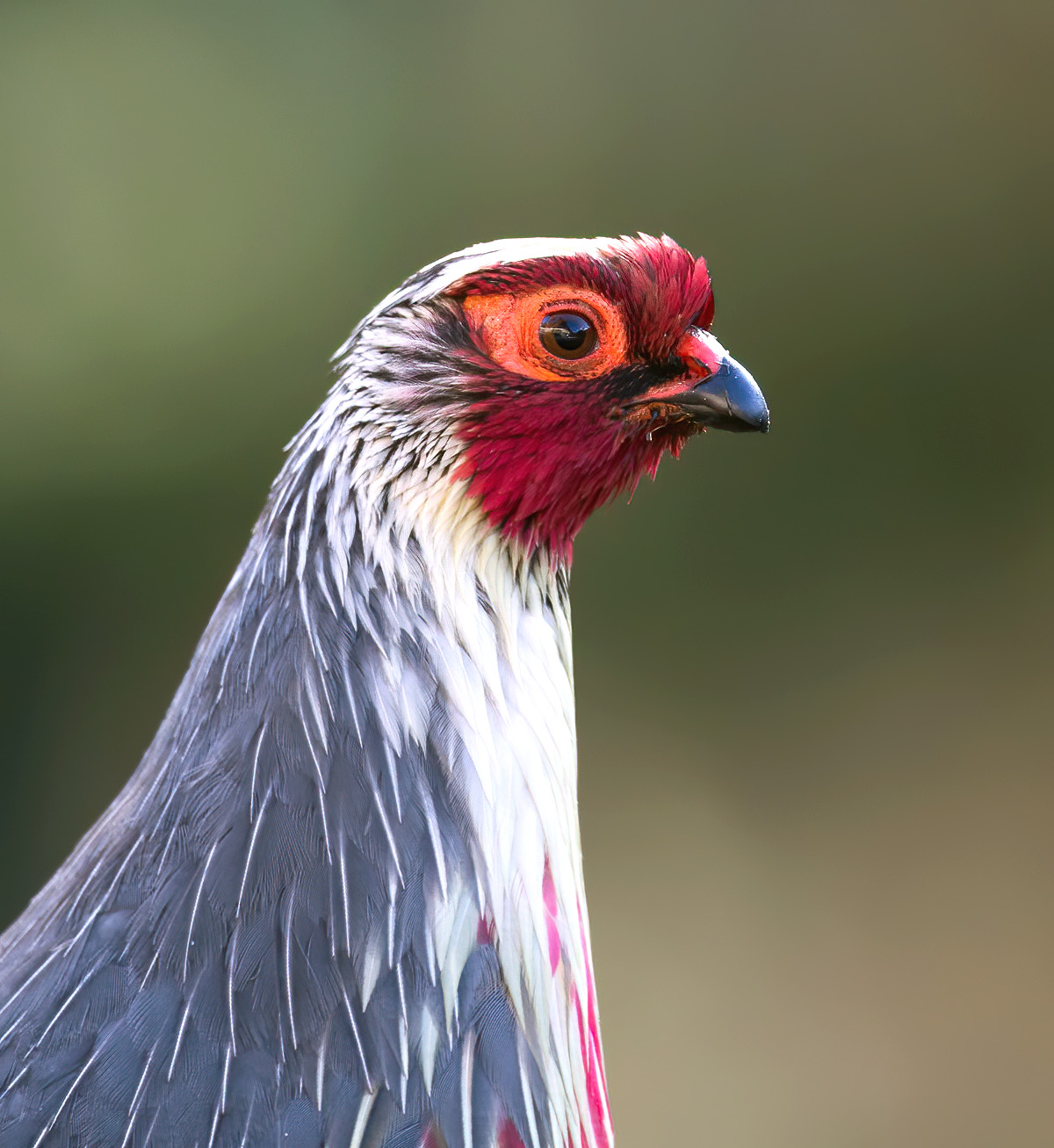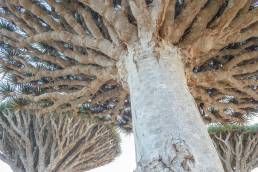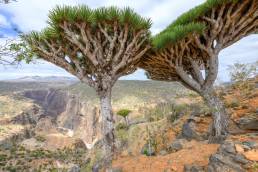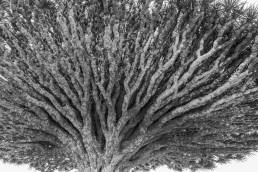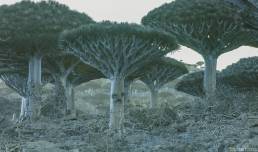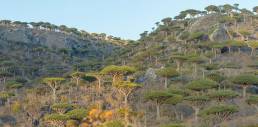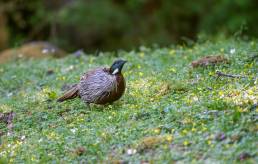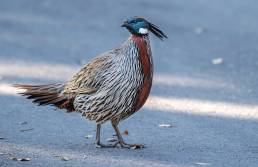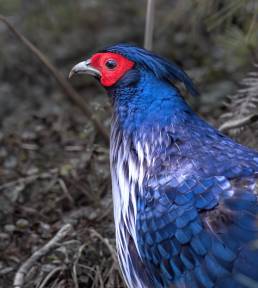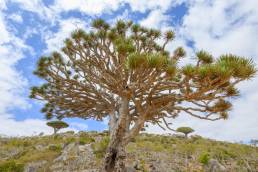After a beautiful sunrise as we were ascending towards the pass we encountered the first of several blood pheasants here.
I find both male and females really beautiful in their own right. The male is flamboyant and conspicuous, but the female blends so amazingly with the surroundings.
Unfortunately I did not have the camera on my side, so I missed several amazing shots of the female on thick mossy-clad forest floor. I had my 1.25x teleconverter on the Nikkor 800mm to get maximum reach, but this is not at all functioning in low light, as it is unreliable at best to reach focus (yes I have latest camera firmware).
Prior to this encounter I had thought the focus problem was perhaps due to very dense foliage, thickets, branches, reflections on leaves, etc., but here the subject was in clear view so I did some test on inanimate objects and focus was a no-go there as well, until I removed the converter. In good light it was fast and reliable.
This was the final straw for me, and after this encounter I am no longer using the converter and will “only” have 800mm at my disposal, but also always being able to reach focus. I need equipment I can rely on, and this is useless in the conditions most important to me: dusk and dawn. Perhaps it is not an issue on Nikon D5, but I have yet to test on that camera.
That said, I experienced many a time when I could not reach focus simply because the subject was too close, and I had no way to go further back.
Such is Bhutan, you have so many close encounters you never thought possible!
For the record: minimum focus distance of this lens is 5.6 meters, and the distance in this exposure is 8.9 meters. Add the teleconverter, and that’s pretty close to 8.9 meters!
It sounds like this:
Elevation: 3609 meters (Thrumshing La Pass, Bhutan)
Last updated on 7 December 2020
